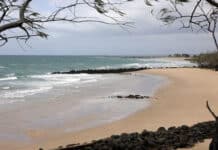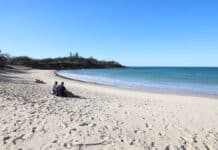The Bureau of Meteorology is forecasting fewer than average tropical cyclones in the 2019-20 summer season from November–April.
In its latest severe weather outlook, the bureau predicts a higher risk of heat waves, potentially more bushfires, fewer cyclones, a lower risk of widespread flooding and a near-normal outlook for severe thunderstorms.
Chair of the Bundaberg Local Disaster Management Group, Jack Dempsey, said residents should still have plans in place for different scenarios.
“Never be complacent,” Mayor Dempsey said.
“It’s better to plan for the worst and hope for the best.
“Now it’s time to get ready. Everyone should have their plan for what to do, and go to Council’s Disaster Dashboard for up to date information.”
On average, there are nine to 13 tropical cyclones each season in Australia, four of which typically cross the coast.
At least one tropical cyclone has crossed the Australian coast each season since reliable records began in the 1970s.
Higher than average pressure over northern Australia and a neutral El Niño–Southern Oscillation (ENSO) have influenced this year’s tropical cyclone outlook.
During ENSO-neutral cyclone seasons, the first cyclone to cross the coast is typically in late December.
Cyclone formation is rarely spread evenly throughout the season; often quiet periods are followed by bursts of activity.

Tropical lows that do not intensify into cyclones, or lows that are the remnants of older cyclones, can still cause widespread rainfall and dangerous flooding. These impacts can extend beyond the tropics into southern areas of the country.
Tropical cyclones that stay well out to sea can still cause damaging winds, large and dangerous waves, and storm surges along the coast.
For Queensland, the bureau says a below-average season is most likely, with a 43 per cent chance of more tropical cyclones than average and a 57 per cent chance of fewer.
Cyclone risk accuracy low for Queensland
About a quarter of tropical cyclones in eastern Australia make landfall and the bureau says outlook accuracy for this region is low.
This outlook is based on the historical relationships between the status of the El Niño–Southern Oscillation (ENSO) over the preceding July to September and the subsequent tropical cyclone season.
Sea surface temperatures in the tropical Pacific Ocean have been ENSO-neutral since April 2019.
All eight international climate models surveyed by the Bureau predict tropical Pacific Ocean temperatures will remain within neutral ENSO bounds until at least February 2020.
The Southern Oscillation Index (SOI) was close to zero throughout July and August but exceeded El Niño thresholds in September, primarily due to higher than average pressure at Darwin.
The corresponding pressure in Tahiti was within normal bounds, suggesting the September SOI value was not related to a developing El Niño.
- Earlier this year: Potential cyclone impact alert from Bundaberg to Ballina
- Imagery brings Givelda Flood Evacuation Route to life







